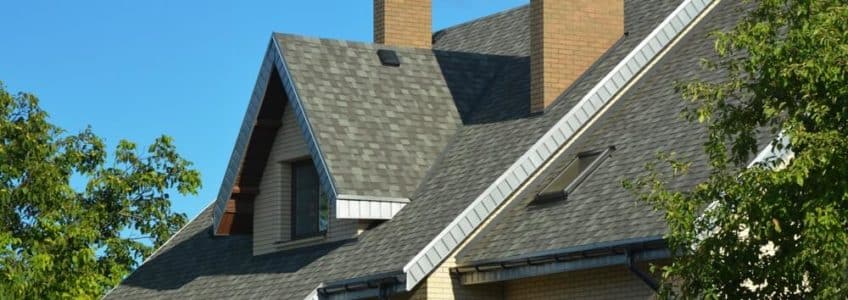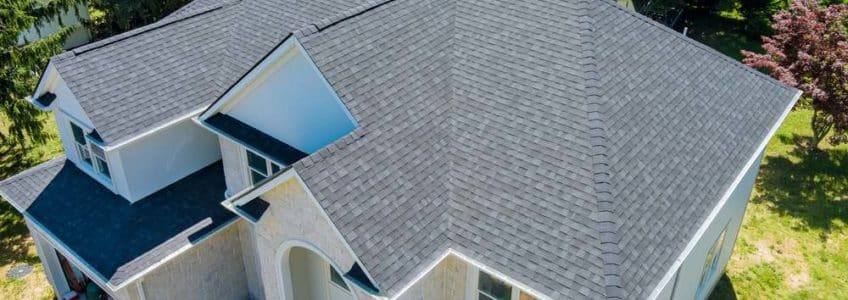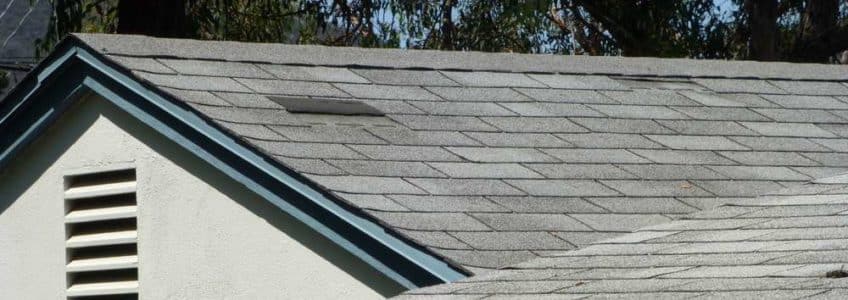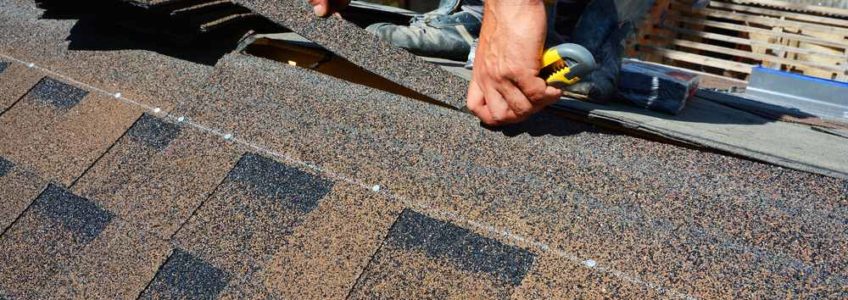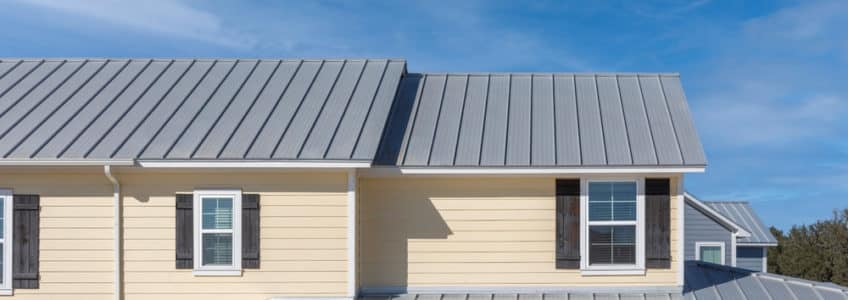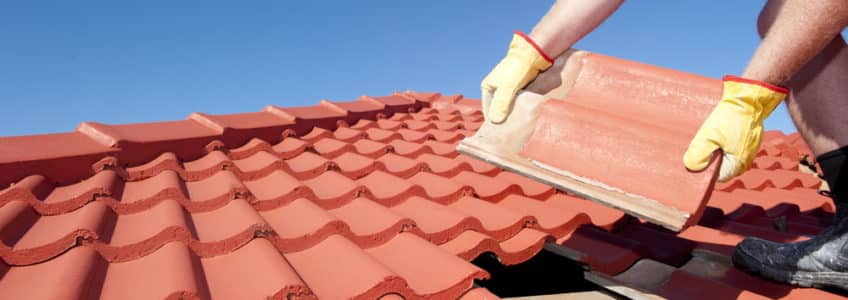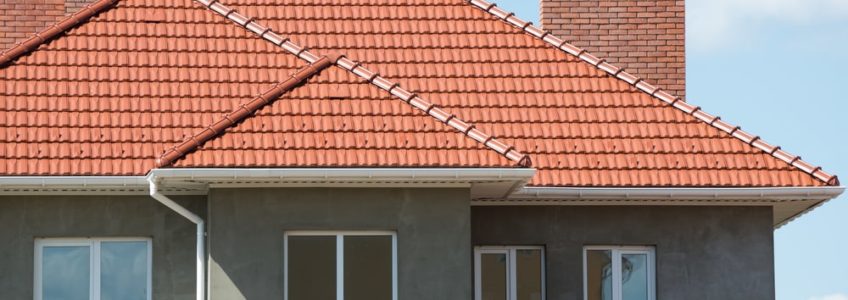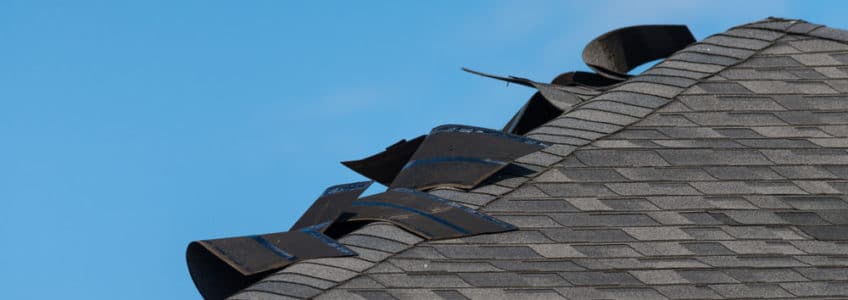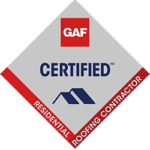Metal vs. Asphalt Shingle Roof: Which Is Right For You
There are a lot of factors to consider when it comes to choosing the right roof for your home. Two of the most popular roofing materials are metal and asphalt shingles. So, how do you know which one is right for you?
It’s important to consider the differences between metal roofs vs shingles in terms of durability, longevity, and cost.
Keep reading to learn more about metal roof vs shingles to make the best decision for your home.
The Differences Between Metal Roofs vs Shingles
There are a few key differences to consider when it comes to metal or shingle roofs.
What Are Metal Roofs?
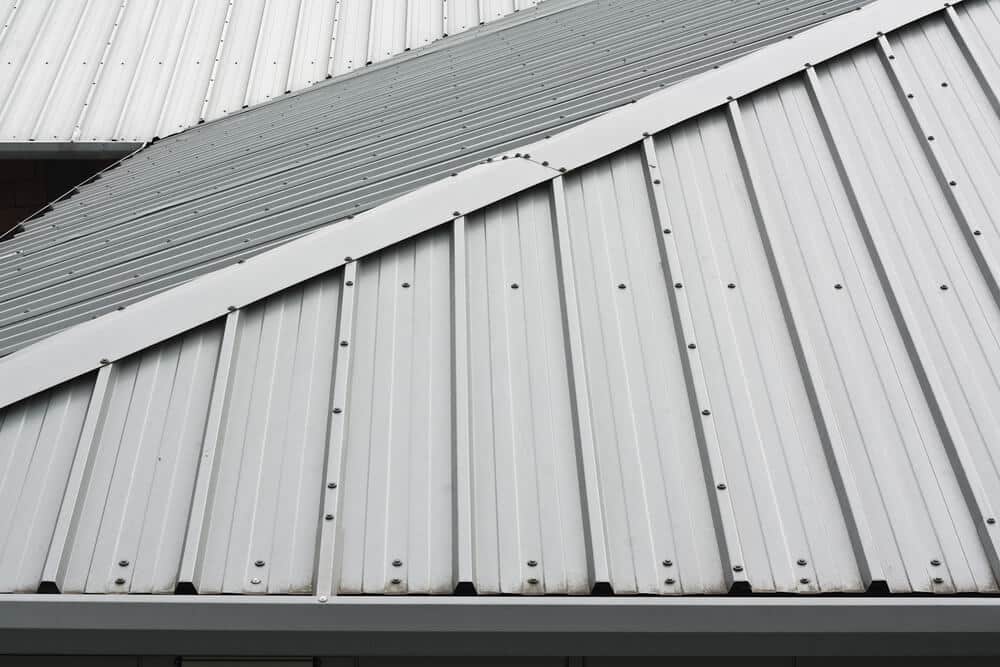
Metal roofs are a type of roofing made from metal panels or tiles. They are typically more expensive than other types of roofing, but they can last longer and be more durable. Metal roofs can also be recycled, which is good for the environment.
What Are Asphalt Shingles?
Asphalt shingles are made of a fiberglass mat covered with asphalt and ceramic granules. The granules protect the asphalt roof from UV damage and add color and texture to the shingle. Asphalt shingles are the most popular type of roofing in the United States and come in various colors and styles.
Which Roofing Material Is Right for You?
These are some of the key factors to consider when deciding between metal or shingle roofs.
Cost
So what’s the difference between the cost of metal roofs vs shingles?
Metal Roofs
Metal roofs are typically more expensive than shingle roofs. The initial cost of metal roofing can be anywhere from $8 to $16 per square foot, depending on the type of metal you choose.
For example, aluminum roofs are usually less expensive than copper roofs. While a metal roof may have a higher initial price tag than other roofing materials, it will more than pay for itself over time in terms of longevity and energy efficiency.
Metal roofs can last for decades with proper care and maintenance. Furthermore, they reflect heat rather than absorb it, helping keep your building cooler in summer and lowering energy bills. In short, a metal roof is a wise investment that will save you money in the long run.
Asphalt Shingle Roofs
The cost of metal roof vs shingles varies depending on the quality of the shingles. However, they are generally less expensive than metal roofs. Home Advisor reports that an asphalt shingle roof costs between $1,500 and $10,000.
This makes them a more budget-friendly option for many homeowners. However, it’s important to remember that asphalt shingles don’t last as long as metal roofs, so you may need to replace them more often.
Durability & Longevity
How long does a metal roof vs shingles last?
Metal Roofs
According to metal roofing experts, metal roofs can last up to 70 years or more with proper installation and maintenance.
They are also much more resistant to fire, wind, and hail damage than other types of roofing. And they are very low maintenance and rarely need repairs.
Asphalt Shingles
When properly installed, asphalt roofs can last 20 to 30 years. In fact, many manufacturers offer extended warranties of up to 50 years.
However, asphalt shingles are more susceptible to fire, wind, and hail damage than metal roofs. They also require more maintenance, such as cleaning and repairs.
Advantages and Disadvantages of a Metal Roof vs Shingles
Both metal and asphalt shingle roofs have their own advantages and disadvantages. Here’s a quick overview:
Advantages of Metal Roofs
- Metal roofs are more durable and have a longer lifespan than asphalt shingles
- They are more resistant to fire, wind, and hail damage
- Metal roofs are low maintenance and rarely need repairs
- They are 100% recyclable and good for the environment
Disadvantages of Metal Roofs
- Metal roofs are more expensive than asphalt roofs
- They can be noisy during rainstorms or hailstorms
- Metal roofs can suffer damage by falling tree limbs or other debris
- They may require special insulation to prevent condensation
Advantages of Asphalt Roof
- Asphalt shingles are less expensive than metal roofs
- They come in various colors and styles to match your home’s exterior
- Asphalt shingles are easy to install and repair
- They offer good insulation and can help keep your home cool in summer
Disadvantages of Asphalt Roof
- Asphalt shingles don’t last as long as metal roofs
- They are more susceptible to fire, wind, and hail damage
- Asphalt shingles require more maintenance, such as cleaning and repairs
- They can be difficult to remove and dispose of properly
Considerations When Choosing a Metal or Shingle Roof
When deciding between metal or shingle roofs, you should keep a few things in mind:
- The climate in your area: If you live in an area with severe weather conditions, such as high winds, hail, or hurricanes, metal roofs are a good option because they can withstand these conditions better than asphalt shingles.
- The slope of your roof: Metal roofs can be installed on any roof, but they work best on roofs with a slope of 3/12 or more. Asphalt shingles, on the other hand, can be installed on roofs with a shallower slope.
- The type of home: Metal roofs are a good choice for homes with a modern or contemporary design, whereas asphalt shingles are a better choice for homes with a more traditional design.
- Your budget: Although metal roofs are more expensive than asphalt shingles, they last longer and require less maintenance. They are a good investment in the long run.
Contact a Metal or Asphalt Shingle Roofing Expert Today
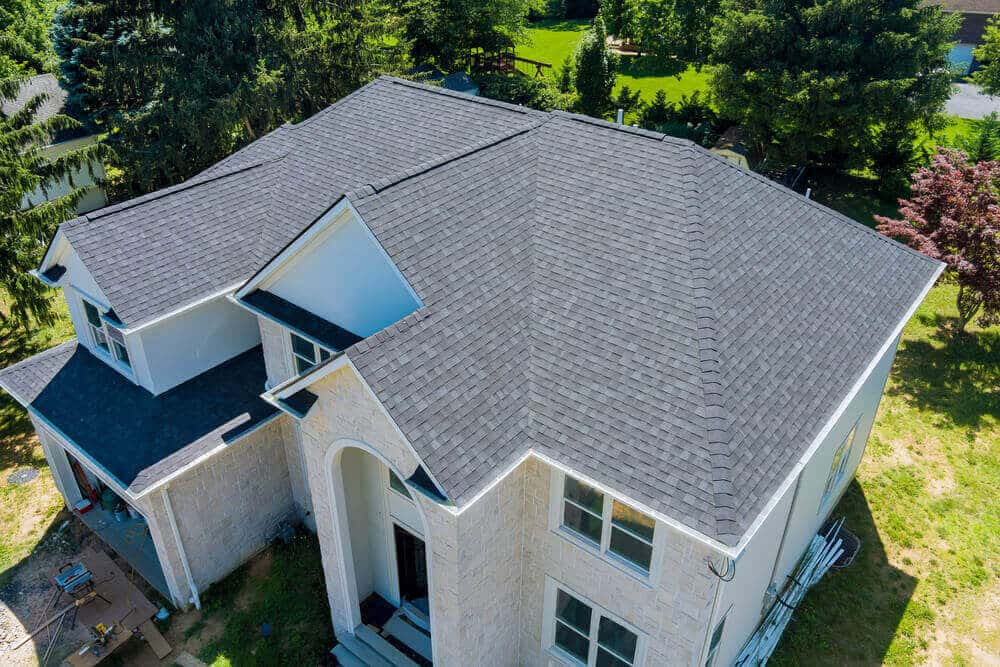
Both metal and shingle roofs have their pros and cons, so it’s important to consider your needs and budget when deciding which type of roof is right for your home.
If you’re still unsure which roofing material is right for your home, contact our metal roofing experts today. They will be able to help you choose the best roofing material for your home and provide a free estimate for a metal roof or shingles.
How Long Does a Roof Last in Minnesota
Minnesota is among the most vibrant and beautiful places to live in the United States. But it’s also home to a varied climate and occasional severe weather that can cause havoc to roofs, siding, and other parts of your home’s exterior.
Between hail, rain and snow, and high winds, Minnesota roofs have to endure some harsh conditions. Today, we’re going to examine the question of how long does a roof last in Minnesota and share some helpful advice to help you improve your roof lifespan.
Typical Roof Lifespan in Minnesota
There’s a myriad of factors that will influence the answer to how long does a roof last in Minnesota. The material the roof is made from significantly impacts the lifespan, along with various environmental conditions.
Metal, tile, or slate roofs have the most extended lifespan of roofing materials, and they commonly last 50 years or more. Wooden shake roofs reliably last for around 30 years, while fiber cement and asphalt shingles have the shortest lifespan, approximately 25 and 20 years, respectively.
Severe weather and environmental conditions will decrease the lifespan of any roof. Of course, if you’ve been searching online for “how long does a roof last in Minnesota,” you’ve likely dealt with your fair share of extreme weather.
If a roof in a more temperate climate is designed to last for 25 years, you can expect that same roof to have a lifespan of 18 to 22 years in Minnesota.
What Causes Roof Damage in Minnesota?
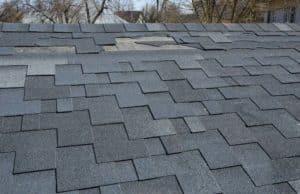
Living in Minnesota means your home has to withstand severe environmental conditions, which could adversely affect your roof lifespan. Here are the most significant contributing weather factors that can influence what answer you get to the question “how long does a roof last in Minnesota:”
- High winds: Strong gusts and wind storms can rip shingles from your roof, which invites more significant problems, such as leaks, to get through the missing shingles.
- Hail: Golf ball-sized hail can quickly cause damage to individual roof shingles.
- Freeze/thaw cycles: Cold winters and temperate summers can compromise your roofing material and shorten the roof’s lifespan.
Identifying Roof Damage
The best way to boost roof lifespan and ensure you get the best outcome to the query, “how long does a roof last in Minnesota?” is to occasionally inspect for evidence of damage, especially after the end of winter or a nasty storm. These are a few tell-tale signs of roof damage:
- Missing shingles
- Damaged shingles
- Roofing material in the gutters
- Stains from roof joists and decking
- Leaks
- Sunlight peeking through into the attic
When considering how long does a roof last in Minnesota, missing or damaged shingles are one of the most common culprits for a shorter lifespan in the state. High winds during severe storms can rip shingles from the roof, while large hail can damage individual shingles and lead to leaks.
With asphalt or cement shingle roofs, you might encounter roofing material in your gutters. If you see any debris, that’s a sign that your shingles are degrading and indicates a more significant problem.
If you notice staining on the roof in the shape of roof joists, your roof is likely reaching the end of its useful lifespan.
Leaks and sunlight peeking through in spots where it shouldn’t are typically the most extensive problems. These issues will lead to more significant leaks and won’t offer homeowners a favorable answer to the question, “how long does a roof last in Minnesota?”
How Often Should You Inspect Your Roof?
Roofing damage can happen at a moment’s notice, so Minnesota homeowners must be vigilant and monitor their roofs for signs of deterioration. If you don’t want to keep thinking about how long does a roof last in Minnesota, it’s a good idea to inspect your roof every six months.
As a rule of thumb, it’s best to look closely at your roof from the ground level. You should examine your gutters for indications that any roofing material has washed away.
You’ll want to perform a more thorough yearly assessment to ensure your roof is in top condition, so you’ll never be left wondering how long does a roof last in Minnesota.
Keep in mind that roofing is dangerous work, and you shouldn’t inspect the roof yourself unless you have experience working with roofing. You’ll need proper footwear and safety equipment, a quality ladder, and a spotter.
Catching roof damage early on can save you thousands of dollars in repair or replacement costs. If you don’t feel comfortable with the process, contact an experienced roofing contractor to assess the roof for you.
What Roofing Material Is Best for Minnesota Homes?
Even with an answer to “how long does a roof last in Minnesota,” homeowners may still be in the market for a roof replacement. If that’s the case, you’re likely looking for a roofing material that can deliver the most value and extended lifespan possible.
You’ll want to consider the pros and cons of all roofing materials to find the right match. For example, copper or metal roofs provide the longest lifespan but are also expensive and more challenging to maintain. Meanwhile, asphalt or cement roofs aren’t quite as durable, but they’re more affordable and easier to maintain.
The most important thing to remember as a Minnesota homeowner is to choose a trusted roofing contractor with the expertise needed to protect your family from harsh weather.
After all, the proper installation of underlayment, flashing, and roofing material is just as important as the material itself. It also goes a long way in determining the matter of how long a roof lasts in Minnesota.
Get Your Free Estimate Today With A to Z Construction
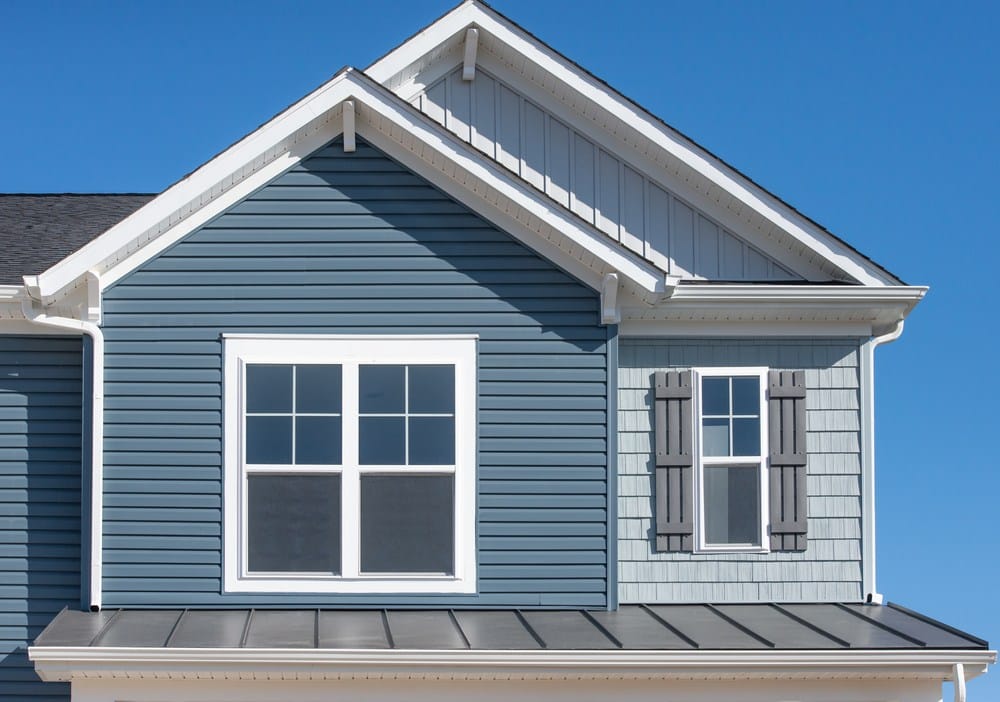
Minnesotans know too well how important it is to have a well-maintained, high-quality roof on their home. With that in mind, you need to know what signs of damage to look for and routinely inspect your roof to ensure it’s in good condition.
Now that you can answer the question of how long does a roof last in Minnesota, we encourage you to turn to us for all your roofing needs. Our seasoned professionals are on hand to give you trusted opinions if your roof is damaged or in disrepair. We’re ready to address whatever roofing issues your property might be experiencing. Contact A to Z Construction today to get your free roofing estimate.
Hail Roof Damage: Everything You Need to Know
Several factors influence roof hail damage. What size hail will damage a roof, how much hail damage will require you to replace a roof, and what hail damage looks like on a roof are essential questions for fixing and preventing roof hail damage. Here is everything you need to know about hail damage to a roof.
How Does Hail Damage Your Roof?
Hail damages your roof when it impacts the roof with a high enough intensity to cause dents, scratches, punctures, and loose or missing shingles. The roof hail damage will also vary depending on your roof’s material. However, never overlook roof hail damage, no matter what material your home has.
Asphalt shingle roofs have the longest lifespan but are middle-of-the-road when it comes to preventing hail damage to a roof. Shingles can be pitted, dented, scratched, cracked, and knocked loose. Asphalt shingles are the most common roofing material.
Clay shingles or tiles can shatter due to roof hail damage, while metal roofing may only dent thanks to hail damage to a roof. Wooden roofs can take the most roof hail damage but can take the least amount of damage from other weather conditions.
What Does Hail Damage Look Like on a Roof?
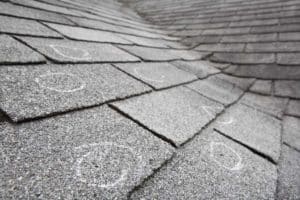
If you’ve never experienced a hail storm, you may ask, what does hail damage look like on a roof? Hail damage to a roof can look like “bruises” on shingles or can misalign shingles and tear them off. The bruises appear as cracks, fractures, dents, and missing chunks. They can be hard to spot but hail damage to a roof can lead to more significant problems if not solved.
So, what does hail damage look like on a roof? Typically, it looks like one of the following three things.
Cracks and Dents in Roof Hail Damage
Cracks from roof hail damage can look like thin slivers within your shingles and can change the shape of the remaining material. In severe hailstorms, your shingles can break entirely off, resulting in exposed fiberglass mats.
Dents typically come from larger hailstones and are less likely to occur in shingles than in other materials like sheeting, brick, or wood because shingles are more flexible. However, hail may have dented gutters, air vents, or other metal structures.
Exposed or Fractured Fiberglass Mats
If hail cracks the shingles enough to loosen them, the fiberglass mat underneath can become exposed. It’s easy to tell what an exposed mat looks like, but it can be harder to see a fractured one (especially if the shingle is still in place) from roof hail damage.
Exposed mats can lead to water accumulation under the shingles and are the perfect place for ice to form and pop your shingles off, causing roof hail damage. Fractured mats can have water seep through them and into your house, causing water damage to the wooden frame and ceilings.
Cosmetic Hail Damages to Roof
When it comes to cosmetic damage, what does hail damage look like on a roof? Hail damage to a roof mostly results in cosmetic damage that can lead to more significant issues if left untreated. For example, a dent or crack in a shingle won’t immediately be the end of your entire roof. How much hail damage you need to replace a roof can depend on the seriousness of the cosmetic damage, which can lead to permanent damage.
For example, a few cracks won’t ruin the entire roof within a day. However, if you never repair the cracked shingle, water can get into the roof and freeze, causing further cracks under and between the shingles.
If you notice damage on other parts of your roof, it’s a good idea to call us for a free inspection. This way, professionals can look for damage you may have missed when looking over your roof for hail damage.
What Size Hail Will Damage a Roof?
No two storms have the same-sized hailstones, and the different sizes can result in additional roof damage. But what size hail will damage a roof? Typically, hailstones range from the size of a pea to the size of a softball. What size hail will damage your roof? Anything larger than a grape will cause hail damage to a roof.
Smaller hailstones don’t typically have a high enough density to cause visible roof hail damage- though they may be the end of your flowerbeds. Hail larger than an inch can gain enough momentum through a strong wind to begin chipping away at bricks and shingles, causing roof hail damage.
When the wind picks up during a hailstorm, it doesn’t matter what size the hail is to damage your roof. Hailstones around two to four inches can impact your roof anywhere between 44 to 72 mph. Imagine a softball-sized hailstone with a higher density hitting your roof at 60 mph; this will cause significant hail damage to a roof.
So, what size hail will damage a roof? Typically, anything larger than an inch.
How Much Hail Damage To Replace a Roof?
How much hail damage to replace a roof? That depends on whether you want insurance to pay for it. Insurance companies offer different levels of coverage depending on where you live and the price of your deductible. Up here in Minnesota, it’s definitely part of your coverage. But how much damage is enough to qualify? How much hail damage to replace a roof?
In terms of hail damage to a roof, most insurance companies want to see seven to ten hail impact points that caused visual damage within a 10’ by 10’ square. However, if your roof has three to four punctures due to hail damage, you’re most likely covered for at least a partial repair.
Some insurance companies won’t cover cosmetic damages, which is why that free inspection is crucial. Having a professional company state that there’s physical damage to your roof is the first step to replacing it.
A professional appraisal can prove the damage is from hail, not from other situations like UV rays, branches, animals, or improper installation. So, how much hail damage to replace a roof? Typically about seven to ten points of impact per every ten square feet.
Have Hail Damage? Get Your Free Estimate Today
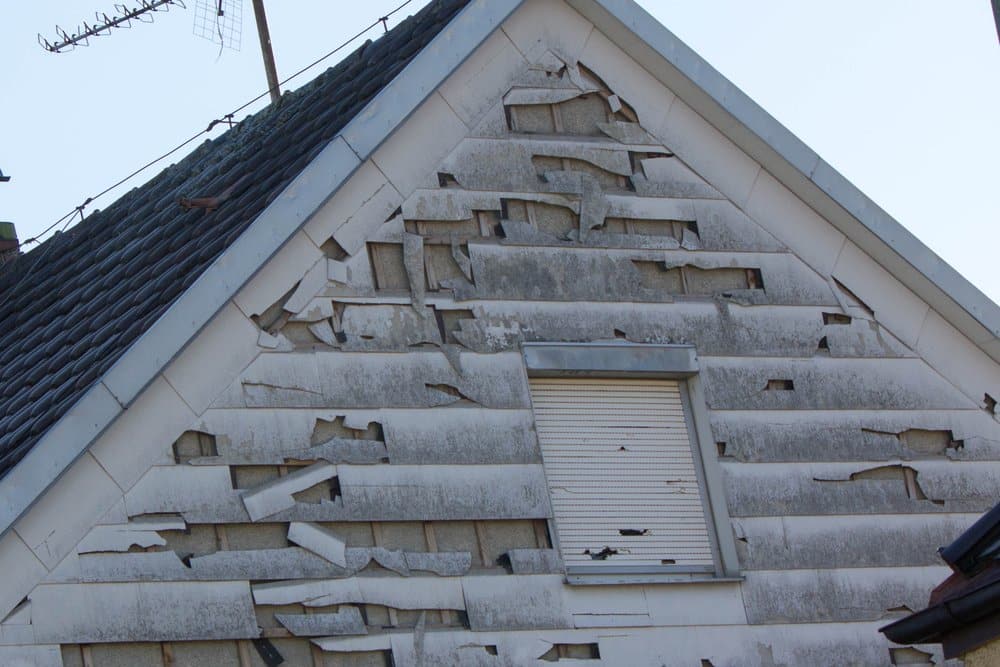
Your roof is built to protect your house, but sometimes mother nature can be a bit too much and cause hail damage to a roof. When looking for hail damage to your roof, check for dents, cracks, and granule loss on your shingles. Checking the gutters and air vents for hail damage to a roof is good for diagnosing the hail’s size.
Roof hail damage can be both cosmetic and extreme, meaning you’ll need someone to analyze the full depth of damage to your roof. Contact A to Z Construction today, and we’ll come out and ensure your roof is in excellent condition. If it’s not, we’ll be happy to stay and finish the job.
How Often Should a Roof Be Replaced?
Some homeowners might dread the idea of a roof replacement since it can be time-consuming and expensive. The truth is that every once in a while, it needs replacing to increase your home’s longevity. We have seen our share of various roof types, so let’s break down the different roofing types and how often to replace roofs.
Life of a Roof: An Overview
How often to replace roofs depends on how long the building has been around and what damage it has sustained. Most roofs last between 20 to 30 years. However, if a high-quality team installed your roof with proper ventilation, it can last up to 50 years.
How long your roof initially lasts will depend on the roofing materials themselves and if any major storms or trees have damaged the roof. Remember that different roof materials will react differently to heat and water, so you should find the one that works best for the area’s weather patterns and your housing needs.
When to Replace a Roof?
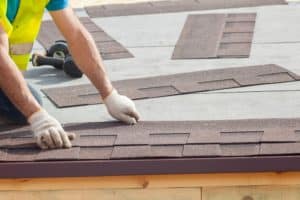
When professionals advise on how often to replace roofs, they always consider the type of roofing material. Today, there are five different types of common roofing materials that you will pick from.
1. Slate Roofing
Slate roofing is usually the most robust roofing material on the market. It can last anywhere from 75 to 100 years without significant damage. Slate is a strong material, but it does require a lengthy installation process since each tile goes onto the roof one at a time.
If you’re considering a slate roof replacement, make sure your home can handle the weight since slate is one of the heavier roofing materials. Slate roofing is also expensive, on top of possibly needing to refit your home. If you think it’ll cost more to replace your original roof, stick with a slate roof for the next 75 years at minimum.
2. Cedar Shake Roof
Unlike slate roofs, cedar shake roofs come primarily from wooden materials, which still last a long time but are not practically immortal, like slate roofs.
They also take less time to lay down than slate roofs since cedar shingles come in two-foot sections. You can choose the taper-sawn or hand-split looks, making your roof look more refined or more rugged.
When well-made, a cedar shake roof should last up to 30 years when well-made. Provided there are no major disasters and your roofing team uses top-notch materials, you might even get 50 years out of it.
That said, you probably won’t want a cedar shake roof if you live in an area with high humidity or extreme dryness. Either condition will cause the cedar tiles to age faster.
3. Composite Roof
If you want a roof that looks like either slate or cedar shake but don’t want to shell out too much money, a composite roof might be just right.
They’re a strong roofing option since they can withstand heavy impacts, like hail or heavy rain. Plus, they come from recycled materials, like plastic and rubber, allowing hail to bounce off them.
With that in mind, you can expect a great composite roof to last between 30 to 50 years.
4. Standing Seam Metal Roof
People consider metal roofs for many reasons, including that standing seam metal roofs look great and work in any climate. They come from seamed metal plates that contract with heat and cold, so they don’t age as fast as other roofing choices.
You can expect a typical standing seam metal roof to last for roughly 30 years if you care for it regularly.
5. Asphalt Roof
While it sounds like it should be the strongest roofing choice, asphalt has the shortest lifespan of roof replacements. They have great design, though, since they can either lay flat or have a dimensional look.
Asphalt comes in three types: luxury, architectural, and 3-tab. Each of these materials will last roughly 30 years.
How Do You Know If You Should Replace Your Roof?
When deciding how often to replace roofing materials, you will have some crucial questions. It’s very easy to call up your local roofing company to get an inspection for a potential new roof. In the meantime, you can look out for some general signs you need a new roof.
We also have a few roof maintenance tips to put off another roof replacement as long as possible.
Regularly Look for Internal and External Damage
Make a schedule and pick a day to check for internal and external damage on your roof. It’s an excellent idea to check for damage after a big storm.
You might even get a professional inspection every couple of years or after an especially harsh storm, just to be sure.
Keep Track of Your Roof Shingles’ Age
If you’ve had a roof replacement before, keep track of how long it’s been on your house. Know the typical lifetime of your roofing material and keep that year in mind for later.
Understand Your Roof’s Maintenance Needs
Besides checking for general damage, it’s a good idea to go through the following checklist for roof damage to determine how often to replace roofing and if it’s time for yours to receive that treatment.
Check Your Shingles
Take time to check your shingles to see if anything is out of place, cracked, or broken. This also means checking out your chimney for anything out of place. If you see any cracked or missing mortar, or if your chimney is leaning to one side, it might be good to have an inspection for foundational problems.
Check For Tree Hazards
If there are any low-hanging branches close to your roof, trim them or cut them entirely away. Doing so can also prevent leaves from getting into your gutters.
Clean Out Your Gutters
If leaves or debris congest your gutters, they can become heavy and drag on your roof, so keep them clear with mesh guards and regular cleaning.
Wash Off Your Roof
Certain roofing types can gather algae, so wash that away before it becomes a more significant problem. A mixture of water and bleach should do the trick.
Call a Professional
As always, when in doubt, contact a roofing professional. Our talented team can help you decide when it’s the best time to replace your roof.
Is It Time to Replace Your Roof?
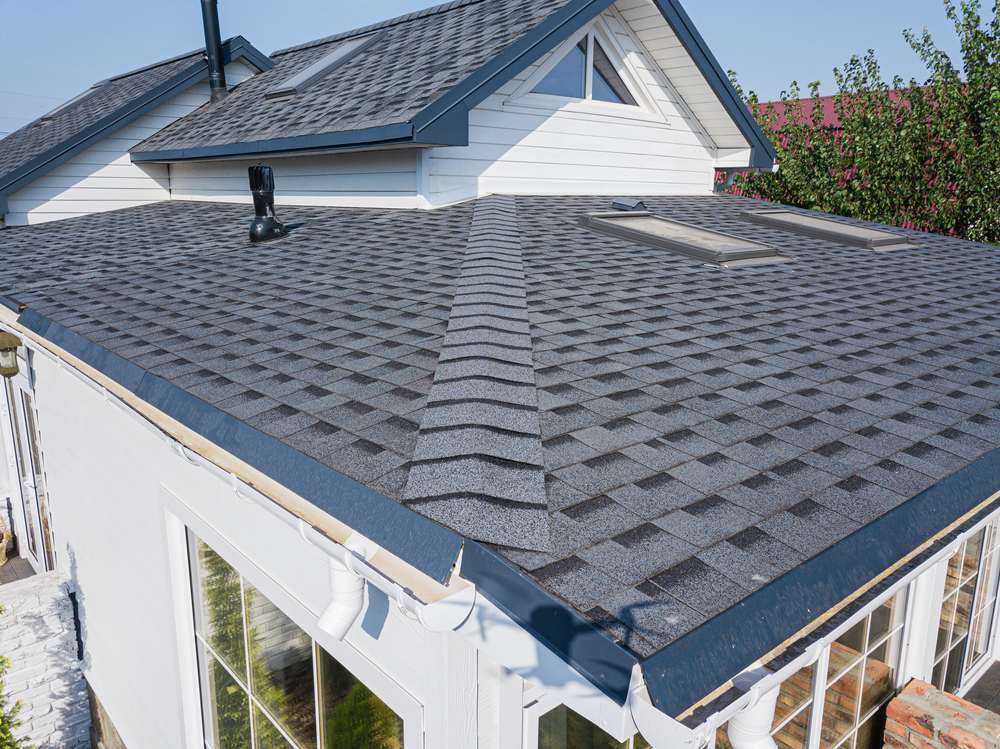
How often to replace a roof depends on your roofing materials, their age, and whether there is any external damage. Luckily, when to replace roofing materials can be a long time off with regular check-ups and professional inspections.
A to Z Construction covers all your roofing needs. If you need an inspection or a replacement, we can take care of you and your roof with no problem. Contact us today for a free roofing estimate for your replacement project.
8 Reasons to Consider Whether a Metal Roof Is Worth the Investment
When researching new and affordable roofing options for your home or replacing an existing one, thinking beyond the traditional asphalt may be worth it. Since many materials are available, metal roofing is becoming increasingly popular in the residential market.
Metal roofs are an attractive option because they are durable, energy efficient, and require minimal maintenance. This material gives your property a sleek, classy, and appealing look while being one of the most affordable and sturdy roofing systems available in the market today. Read on to learn about eight reasons why investing in a metal roof for your property is worthwhile.
What Is Metal Roofing?
Metal roofs are created with large sheets of tin, steel, copper, or aluminum and are the best alternative to the traditional asphalt roofing system. This type of roofing material is also available in hybrid metal mixtures that mimic the appearance of asphalt shingles.
Metal sheets for roofing are finished with a special coating capable of reflecting heat and preventing rust and other moisture damage. A roof built with metal can keep your home cooler in the summer season and boost the energy efficiency of the property.
Benefits of Metal Roofs
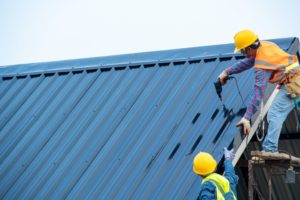
Here are a few of the benefits you can enjoy by investing in a metal roof.
1. Longevity
Metal panel roofs are highly durable and can last for many years. Metal panels remain protected from moss and fungal growth, unlike other roofing materials. Metal roofs are also resistant to pests like:
- Insects
- Birds
- Squirrels and rodents
- Bats
- Bees and wasps
With this roofing material, your home will be protected from severe damages that an asphalt shingle roof cannot provide. The overall cost of roof installation with metal panels can be higher than other systems, but its longevity and increased lifespan pay off throughout life.
2. Low Maintenance Costs
Unlike other roofing materials, metal panels are durable and resist moisture, meaning they require minimal maintenance and costs. Worrying about expensive repairs and maintenance is eliminated with a metal roof. Since they don’t collect snow, they are the best roofing system for snowy areas and in the winter season.
3. Energy Efficiency
As metal panels come with a special coating, they reflect the sun’s rays and heat to keep your home cooler in the summer season. As a result, you are less likely to use the air conditioner to maintain temperature. Proper insulation also protects metal roofs from excessive cooling and keeps your home warm to help reduce energy consumption.
4. Fire Protection
A metal roofing system is the most fire resistant due to its fireproof features. Metal roofs are less likely to catch fire during a natural disaster like a storm or wildfire. If your residential area is prone to thunderstorms or wildfires, a metal roof is the best option. A metal roof is less likely to catch fire or feed flame-like other traditional roofing systems. This roofing system adds additional safety layers to your personal property and your family from natural disasters.
5. Weather Resistant
Roofing material made of mater offers excellent protection from extreme weather conditions. Raindrops are likely to drain quickly on the metal roof, so there are no risks of leakage and moisture damage. Metal roofs protect your home from:
- Strong winds
- Hail
- Snow
- Ice
- Heavy rain
- And more
6. Environmentally Friendly
Metal panels are 100% recyclable and help reduce your carbon footprint that other roofing systems cannot. Most roofing material manufacturers even use almost 40% of recycled materials. According to research, metal roofing is an eco-friendly roofing option for both residential and commercial properties. Using recycled materials also increases the longevity of metal roofs to extend the lifespan of a metal roof. A good amount of money can also be earned by selling your outdated metal panels as scrap.
7. Increased Home Value
Installation costs of a metal roof can be higher, but it is effortless to justify the return on investment (ROI) as they can boost your home value from 2% to 6%. If you are about to move and want to sell your property after a quick renovation, you can consider installing a metal roof to increase the overall value of your property to sell it for an ideal amount.
Since metal panels are customizable, you can use them in any way to give your home an idea and appealing look. For instance, if you want your roof to compliment the overall design code of your home, you can buy metal panels in any color, design, or shape you want to curb the appeal of your home. Furthermore, you can also purchase metal roofs in different materials like zinc, copper, or aluminum with a high-quality finish and coating.
8. Affordability
No doubt, metal roofs are two or three times more expensive than other roofing systems, but they can save you money in the long run due to their longevity and minimal maintenance. Since the life of a metal roof is longer than other roofs, you can save a lot of bucks in terms of not replacing the roof anytime soon or spending money on expensive repairs and storm damage. As a result, you can enjoy the cost benefits with peace of mind.
Speak With an Expert About Metal Roofing Today
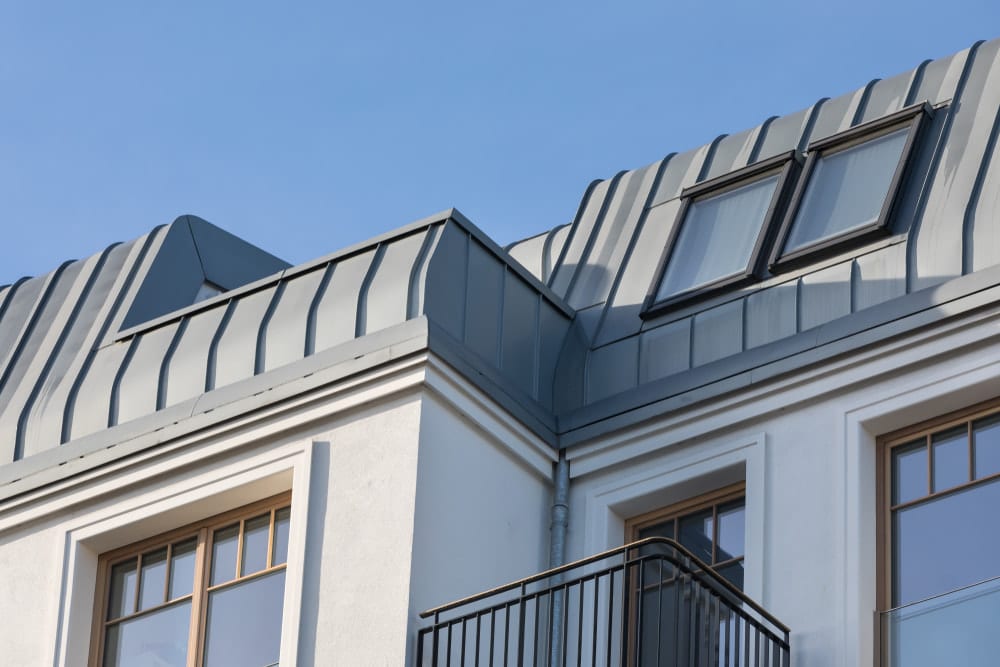
There are numerous reasons to choose metal roofs over other more traditional roofing materials. If you have decided to invest your hard-earned money in metal roofing, do your homework and do proper research to choose the right style, design, and color for your home. Spend enough time finding the best metal roofing contractors who are reliable and have years of experience in metal roof installation.
If you do so, you will end up with a metal roof that is about to protect your home, family, and other belongings for many years to come. Comparing available options is also a great idea to choose roofing materials and contractors worth investing in.
Contact A to Z Construction today to speak with one of our experts about metal roofing.
6 Signs It’s Time To Replace Your Roof
Buying a house is a monumental moment in a person’s life. When you purchase a home, you make a significant financial commitment and commit to putting down roots. You will no longer think about moving to a new apartment every year. Instead, you will be at your new house for several years, maybe even a lifetime.
However, more work goes into owning a house than you might think. Notably, most people do not think about what is over their heads, but it is essential. Unchecked, your roof could degrade in quality. As a result, you need to know the signs you need a new roof. Fortunately, we are here to educate you on the most common signs.
Water Damage in the Attic or Highest Floor
If there is water damage in your attic area or highest floor, that’s when you need to replace roof structures. Water damage at the upper end of your house is a sign your roof is no longer doing a great job of keeping the rain out of your home. Signs of water damage include moisture marks, brown, yellow, or gray stains, and paint peeling off the walls.
Furthermore, you should see if you have damp rafters or leaks. These are other signs your roof is damaged. However, it is crucial to note that not everyone can be a roofing expert. As a result, we recommend bringing in a roofing expert to do an inspection once a year. It will cost you some money upfront, but it could save you thousands of dollars in repairs.
Your Roof Is Sagging
If your roof is sagging, it is a sign you need a new roof. A roof sagging means moisture got trapped in the wood and rotted the boards under the roof. The result of this is the roof sagging away from its foundation. Replace a sagging roof immediately because it can sink further and cause more damage to your house’s structure.
A sagging roof is not as easy to spot as you might think. It is not as if it is sagging several feet, so you might not notice it immediately. You should check your roof for signs of trapped moisture. These can include rotting boards and sagging spots in the lowest sections of your roof.
Another thing you can do is see if you can see the sagging visually. Take several steps back from your house or even head to the other side of the street. Look at your home from several angles. The roof should appear straight at all angles. It should be easy to notice if your roof is sagging significantly.
Some Shingles Are Missing
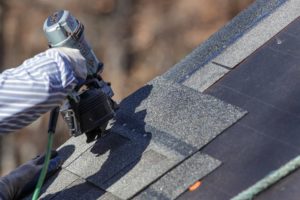
Roofing shingles are in place to create a watertight, wind-resistant seal that protects the inside of your house from the elements. As a result, assessing the state of your shingles is a good way to see if your roof has damage beyond repair. You can replace a few damaged or missing shingles, but several missing shingles can be signs you need a new roof.
If you notice your shingles start to curl, it is a sign they are no longer properly attached to the roof. As a result, they have sustained damage and are no longer effective. Strong winds and storms can cause your shingles to curl. You can speak to a roofing consultant to see if they think they can repair it or if it is time for a new roof.
Another thing to do is check your gutters and downspouts for shingle granules. If you notice several granules, it is a sign that your shingles are degrading. Even if they are flat and no shingles are missing, lots of granules in your gutter is a sign you need a new roof, as your current roof is nearing the end of its life.
Your Heating and Cooling Bills Are Increasing
Bills are expensive, but they are a regular part of life. You should know how much you pay monthly for your insurance, internet, and utilities. While utility costs vary monthly, there should not be a drastic shift. As a result, if you notice a drastic increase in your energy costs, it is a sign you need a new roof.
A damaged roof will no longer insulate your roof as well as it did in peak condition. As a result, it takes more energy to heat or cool your house, and your energy bill will increase.
Moss and Mold Have Started To Grow
Moss, mold, and other sometimes dangerous fungi start to grow in moist areas. As a result, if you notice mold or moss growing in your attic near the roof, it is a sign of excess moisture. As we have mentioned, moisture in your attic is a sign your roof is no longer doing an adequate job of protecting your house from the elements.
If you notice mold, you can try to wipe it away with a stiff brush. If the mold is in its early stages, that should do the trick. However, if it has grown significantly, you may need to contact a professional for assistance.
Your Roof Has Outlived Its Lifespan
Roofs do not last forever. Unfortunately, everything will eventually degrade, so there will come a time when you need to replace your roof if you plan on living in your house your whole life. There are three common types of roofs available to the everyday consumer, such as:
- Asphalt shingles
- Metal
- Clay tiles
Roofs with asphalt shingles usually last 10 to 20 years. Metal roofs can last 30 to 50 years, depending on the elements in your area. Finally, types of roofs with clay tiles last around 40 years.
Replace Your Roof Today
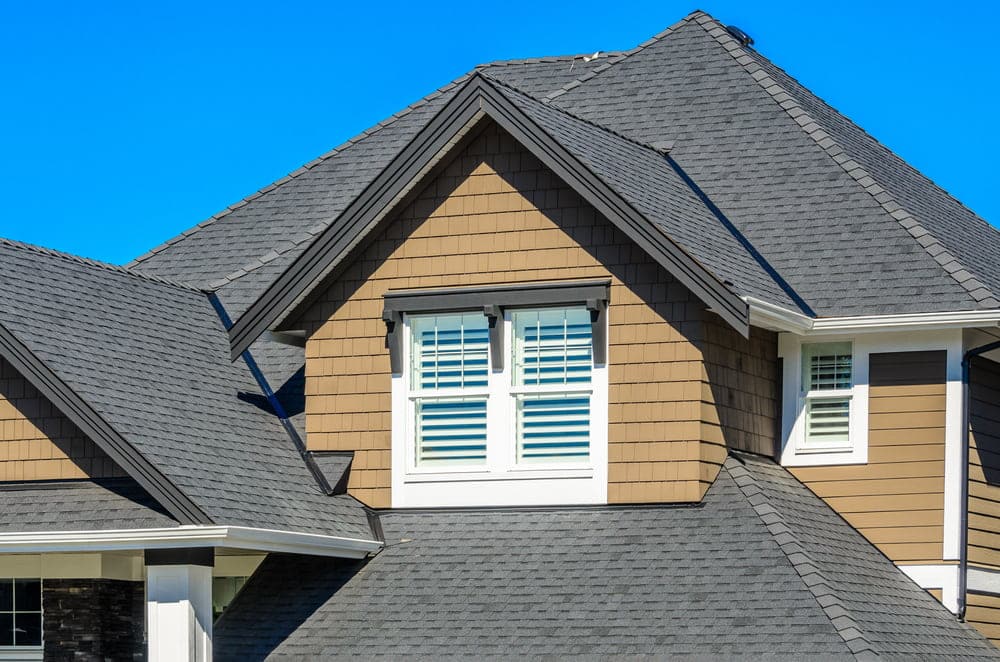
Your roof is one of the most fundamental pieces of your house. Without it, you are not protected from the elements. As a result, it is crucial to know the signs you need a new roof.
You can stay safe and secure if you keep an eye out for the six signs outlined above. Contact the roofing experts at A to Z Construction today to speak with an expert.
Does a New Roof Help Energy Efficiency?
If you’re asking yourself, “will a new roof save energy?” The answer is that it certainly can. One key reason you should go ahead with a roof replacement is the energy savings you can achieve using newer materials installed by experts. Roofs today are much different than roofs even 20 years ago, which has translated into higher energy efficiency.
So, if you’re wondering if a new roof helps energy efficiency, here are a few ways your investment can help you instantly reduce your energy bill.
How Will a New Roof Save Energy?
The newer your roof and the more experienced the team that is installing your roof is, the more energy efficient it will be, which makes installing a new roof by a trusted team a great way to save on energy costs. Here are some of the reasons new roof energy savings are possible:
#1. New Insulation
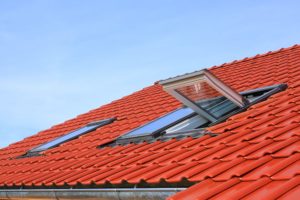
Chances are the insulation in your roof (if there is any) is old and newer technology works better at keeping warm and cold in or out. Recognizing extreme temperatures in your home despite constantly running the heating or central air conditioning could be a sign that it’s time to replace your roof. Proper roof insulation can be a major energy-saving resource as you have to spend less money heating or cooling to keep the rest of your home comfortable.
Better energy efficiency saves you money and energy by not having to heat or cool as often and also reduces wear and tear on your HVAC system. That prolongs its life and saves you money by not having to replace the HVAC components as often.
You can replace your insulation whenever possible, even if you do not replace your roof. Doing it during a roof replacement, however, addresses two needs at the same time.
Additionally, roofing materials are made better than ever, and part of that provides better insulation. That insulation helps keep warm air out in the summer and cold air out during the winter by creating a seal. It reduces the amount of moisture that can build in your attic by keeping humidity outside, and it protects your shingles from mold and rot, prolonging their life.
#2. Proper Ventilation
Ventilation and your roof work hand in hand, even if most people do not realize it. Common mistakes when installing a new roof can result in a loss of energy savings. Part of a roof installation is strategic venting to allow the roof to breathe. That lets hot air out in the summer, and it helps avoid ice dams during the winter.
When air cannot escape because of ventilation, your HVAC has to work much harder to cool the entire home because hot air rises, and if it cannot escape, it builds up. That makes it more difficult to cool hotter air on upper floors, so your HVAC works hard to address something that can be addressed just by adding proper ventilation.
When properly ventilated, your HVAC does not have to work as hard or as often, which cuts down on electricity costs, saving you money and saving energy at the same time. It also helps preserve the materials used in your roof, prolonging their lives by preventing underlayment from drying out, which saves costs by reducing costs for repair and replacement.
#3. Durability
Roofing has always been tough. It must withstand a constant onslaught of weather and temperature extremes to result in new roof energy savings.
While the interior of your house might be cool in the summer, your roof might be exceeding 150 degrees Fahrenheit. During the summer, that can happen day after day. In the winter, when you are warm, your roof endures ice, snow, and freezing temperatures. It also puts up with temperature fluctuations that can go from very hot to very cold in just a few hours during the fall and spring.
Does a new roof help energy efficiency, or is my durable old roof enough? While just about all roofing made from the 1980s on is extremely durable, roofing manufactured over the last 20 generally uses newer technology, and its strength is impressive. It simply puts up with weather extremes better than previous roofing materials. Additionally, a new roof can withstand the extremes of storms, resulting in less costs for storm damage repairs.
More durable materials mean your roof lasts longer, saving money over time. It also means your roof maintains its integrity in terms of new roof energy savings, saving energy, and energy costs. Many roofs today are built to endure heat from the sun better, resist high winds, and hold up better with ice and snow. They simply are built better.
#4. Solar Reflection
If you’re wondering how a new roof saves energy compared to older ones, one of the major updates to materials is solar reflection. Most roofing materials today reflect the sun’s rays rather than absorb them. Estimates are that high solar reflection on a roof can reduce temperatures by as much as 30 percent. Lowering surface temperature prolongs your shingles’ life and reduces the house’s overall heat.
Less heat to cool means running your HVAC less, the system lasting longer, and it being easier to cool your home in the winter.
One way to reduce solar absorption is by using colored shingles. Depending on your location, you can opt for some shingles and roofing materials that never absorb the type of heat that standard black shingles do.
#5. Modern Shingles Are Made Better
As with increased durability and lifespan, today’s shingles also have technology advancements that add to new roof energy savings. Most shingles come with an Energy Star Rating that indicates the materials used are as energy efficient as possible. Energy efficient materials mean you save money via longevity as well as because they have the Energy Star Rating.
Another benefit of roofing technology is that shingles’ wind rating has increased dramatically. Newer shingles can prevent wind damage more easily. In some cases, it can protect a roof up to winds exceeding 130 MPH. Not only will you save on repair and replacement costs, but these shingles also help warm and cool your home.
A roof that lets in the wind siphons off hot and cool air, depending on the season. That means your home is easier to heat and cool even during storms. By helping contain both better when appropriate, your HVAC does not work as hard. Just another reason why it’s a no brainer when asking yourself “does a new roof help energy efficiency?”
New Roof Energy Savings
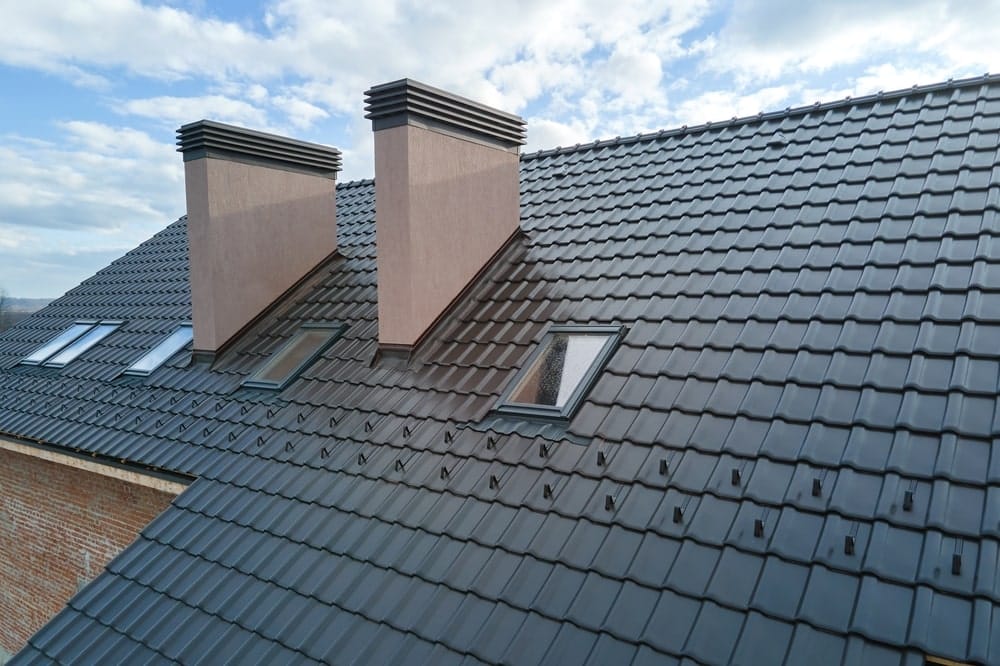
The bottom line to will a new roof save energy is that it can. With a trusted team and the advancements of modern materials, a new roof helps energy efficiency and increases durability as it adapts to current climates and temperatures.
If you notice that your energy costs are through the roof, quite literally, contact A to Z Construction today for a consultation.
Must-Know Roof Maintenance Tips for Homeowners to Make it Last
Taking out some time from your busy schedule to make sure your roof is in tip-top condition is always harder. But believe us, roof maintenance is not as difficult as you may think. Regardless of the roof type you have, a bit of care and effort can make it last longer for many years. proper inspection, maintenance, and addressing any roofing issues as soon as possible boosts the durability of your roof and increase its life span as well. Not all roof maintenance tasks need to hire professionals, because there is a lot you can do yourself with a ladder and some basic tools.
To help you avoid extensive roof repairs and enhance durability, we have listed some must-know roof maintenance tips to ensure your roof is in excellent shape.
Treat for Moss and Algae
Moss and algae growing on your roof can cause extreme damage. This usually occurs in shady areas of the roof in the summer season. Just check your roof for moss and algae on a regular basis and remove yourself or hire a professional to do so. You should also apply products that contain copper and zinc to keep the algae and moss from growing again in the future. This will keep your roof clean to prevent damage and leakage.
Clean the Gutters Especially in Extreme Weather Conditions
Gutters are the most important part of any property to keep water and debris away from the foundation and roof. This is the reason; cleanliness of gutters is imperative to keep the water off your roof. When rainy days arrive, make sure to check your roof for leaves, tree branches, and other debris and clean the gutter properly to make sure they will function well during the rain or storm. Experts recommend the cleaning of roof gutters twice a year to keep water flowing flawlessly. If there are trees and other plants around your home, you should check the gutters for cleaning quarterly.
Remove Leaves, Tree Branches, and Debris from Your Roof
Roof debris can cause blockage of rainwater that can lead to serious damages and issues. That’s why, make sure to remove things like leaves, tree branches, and debris from your roof to avoid damage and growth of moss and algae. Furthermore, heavy storms and disasters like hurricanes and tornadoes can cause tree branches and limbs to fly freely, which can also be damaging to your roof. Checking the roof for debris and removing it instantly is very much important in the rainy season. If there are some giant trees with branches hanging on your roof, you should hire professionals to trim them in the best way possible instead of doing it yourself.
Look for Leaks in Your Attic & Ceilings
Finding the water stains inside your home is another good way to find roofing problems and issues that need to be fixed immediately. So, make sure to check your attic and ceiling for water leakage and damages that can head off any expensive roof repairs. If you find any water stains and leakage signs on your ceiling or walls, contact the best roofing contractors in your area to locate the exact issues and get them fixed immediately.
Remove Snow from your Roof
Snow on your roof in a heavy amount can cause roof collapse or other issues if not removed instantly. Old and shabbier roofs are unable to bear a huge amount of snow on them. And removing the snow with help of a snow rack is the only solution to protect such roofs from damage. If there is extreme snowfall in your area, make sure to hire professionals for snow removal and relieve the weight from your roof.
Ensure Proper Roof Ventilation
A roof needs to breathe properly as we do. If there is a lack of proper ventilation on your roof, excessive heat and moisture can weaken your roof by allowing moss and algae to grow. This also decreases the overall effectiveness of your roofing system to reduce its life span. You can install a quality insulation system for this purpose and remember to clean your roof often to avoid moisture and water leaks due to debris and non-functional gutters.
Get a Professional Roof Inspection
Why you should pay roofing contractors when you have a roof inspection and maintenance checklist on your hand?
The answer is years of experience and expertise they have. They are better able to find out potential roofing issues and problems you may miss while inspecting your roof yourself. They also offer pro tips for better roof maintenance to increase the life span of your roof. Getting a professional roof inspection once in a year helps you spot minor issues before they become expensive repairs.
Hire Professional Contractors for All Roof Maintenance and Repairs
Professional roofing contractors are experienced to tell when you should perform a repair or replace your existing roof with a new one. Most homeowners prefer repairs instead of replacing a roof just to save time and money. But sometimes repairs are useless to improve the condition of a roof. This is where expert advice comes into handy. Roofing professionals like A-to-Z contractors give their clients honest advice on whether they should opt for a quick repair or they should replace the entire roof to save money and prevent potential damages in near future. Roofing experts are highly skilled and professionally trained about what to look for during roof maintenance, how to work with different roofing types and keep detailed records of roofing jobs done for their clients. Hiring professional roofing contractors gives peace of mind and saves money in terms of the increased life of your roof.
Final Words
Roof maintenance is not a big deal if you are aware of the important things to pay the most attention to. If you have found some serious issues that you cannot handle yourself, consider hiring a team of expert roofers so they can inspect your roof further to spot potential roofing issues and help you repair them accordingly without taking a toll on your budget.
How to Identify Wind Damage to Your Roof
Roof damage can wreak havoc on a home following a severe storm. Luckily, roof contractors and insurance companies deal with this issue regularly, but having the best roofing and construction company in your back pocket can make all the difference.
Roof repair starts with the homeowner. So how do you learn to identify wind damage to a roof?
Let’s start with a few of the basics of recognizing the signs of wind damage to a roof.
Inspection Comes First
Immediately following a severe storm, make an effort to inspect for any storm damage – especially if you heard debris hitting your roof. That inspection includes the actual roof of your home and the inside to check for leaks.
Roof damage can occur due to lightning strikes, heavy rains, and flying debris hitting your home – not just heavy winds.
But what are you looking for in your inspection? Be on the lookout for anything that can cause roof damage following a severe wind storm, including damaged or loose shingles, cracking, bubbling, or moisture damage.
Signs of Wind Damage to Roof
You should be able to spot if the wind has managed to damage your roof. Here are a few things to look for if you suspect roof damage from wind.
#1. Displaced Shingles
Out of all the things to look out for when identifying wind damage to your roof, displaced shingles are usually the first thing you will spot.
Fully displaced shingles will usually land on the ground around your home, remain in pieces on your roof, or will curl up on your roof. However, displacement may manifest in more subtle ways, such as buckling, cracking, cupping, blistering, or flaking.
#2. Gutter Damage
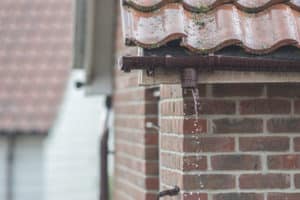
Your gutters are the first line of defense for keeping water away from your roof lining. Unfortunately, it can be easy for the wind to damage gutters by dislodging or ripping them off the sides of your home. Inspect the perimeter of your home. You may locate gutters on the ground or leaning against the side of your home.
A damaged gutter can compromise the fascia boards and cause water to leak into the roof lining, ceilings, or between the walls and the siding.
#3. Soffit and Fascia Board Damage
As we just mentioned, damage to your fascia boards can be caused by the gutters ripping off the sides of your home. However, a fierce gust of wind can have the power to tear the fascia boards off your home. Soffits see damage during storms as well.
A severely damaged fascia board or soffit can help wind get under your shingles and tear them off the roof. Getting a fascia board replaced is paramount following a severe storm.
#4. Flashing Damage
The flashing of a roof is another critical aspect of the overall structure. Flashing helps prevent water damage by directing water to gutters or off the side of your home. In addition, flashing is put under your shingles to provide another layer of protection.
Unfortunately, it can be prone to failure during severe storms. A powerful gust of wind can rip, bend, or tear a piece of flashing.
#5. Chimney Damage
A chimney is usually a densely constructed portion of your home’s structure. However, depending on the chimney’s age, a severe storm can cause severe damage.
Catastrophic damage is easy to spot, but there are subtle signs your chimney may have suffered damage. After a storm, if you notice water seeping through the chimney or near the joints between chimney and roof, the flashing may have been damaged. Similarly, if you notice water leaking down the chimney itself, then your cap may have suffered damage. If you see cracks in the brick or mortar of your chimney, there may be structural damage.
What To Expect If You Need Roof Repair After a Storm
Chances are, you will need to call a trusted roofing repair contractor for help if you are dealing with damage after a severe storm. However, you’ll also need to contact your insurance to inform them of the issues and learn more about your plan’s coverage.
If you determine help is necessary following your inspection, a team of experts will arrive at your home and perform a thorough inspection to see if any further roof damage occurred.
That rigorous inspection comes with more than a spot check of noticeable damage to your roof. A reliable construction team will use infrared cameras and moisture tests to see if the storm caused any water damage. Then, they’ll check your gutters for damage and clogs to ensure you receive a detailed analysis of any issues.
Following the inspection, customers should get a report and a recommendation on whether the roof needs repairs or to be replaced outright. A good construction team will not leave without touching base on what needs to be repaired and a plan of how much it will cost.
You may ask yourself, “Does insurance cover wind damage to my roof?” It depends on your insurance. A reputable construction team will work with insurance companies to establish a financial solution for you.
Once we all decide on a plan for your repair, A to Z Construction works with you to establish a time frame and how we plan to move forward. Then, once the repair is complete, you will rest easy knowing your roof has been repaired by a group of professionals with decades of experience.
There is no need to worry about cleaning up behind us, either. Our team will clean up around your home, so there is no threat of stepping on a roofing nail after we leave. Our work speaks for itself.
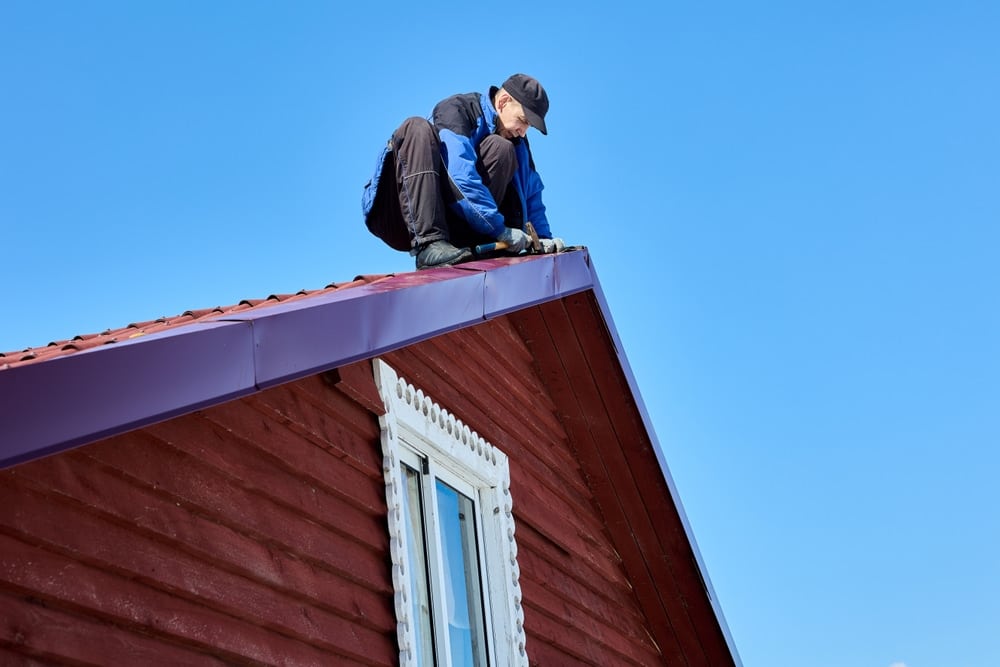
Contact A to Z Construction for More
A to Z Construction is a one-stop-shop kind of company when it comes to storm damage repair, roof installation, and maintenance. So if you feel any way about your roof following a severe wind storm, an inspection by us is an impactful way to reduce your anxiety.
Contact us today, and we will get you set up with a free roof inspection and a full report on what might need to be repaired or replaced.
For quality work and unmatched customer service delivered 24 hours a day and seven days a week, A to Z Construction wants to be your contractor of choice.
Does Insurance Cover Roof Damage From A Storm?
Powerful weather events like tornadoes and thunderstorms frequently damage roofs. Over the past several years, Minnesota storms have become more intense, increasing the instances of damage.
When severe weather harms your roof, your first question should be whether insurance will cover storm damage. This article will explain what to look for, what types of damage are covered by home insurance policies, and the process of claiming roof damage.
What Should Homeowners Look for When Their Homes Incur Wind or Storm Damage?
During a storm, your top priority should be staying safe indoors. When the weather clears, it’s time to check your roof. Be sure to check safely and wait for a contractor or insurance adjuster if access to your roof could pose a problem.
Roof damage insurance claims are common in Minnesota. The damage may be immediately apparent or need a detailed examination. It may require repairs if you hear loud noises or hail during the storm.
The damage may be evident if a tree has fallen on your home or if there are other openings. In this case, it is essential to have a contractor add a tarp to your roof to prevent further damage inside.
One of the top signs of a storm-damaged roof is water leaking inside the home. Even if your home was not affected by severe winds, shingles might need replacement. Even a few missing shingles due to hail or wind can cause damage to your home’s interior.
Other signs of possible roofing insurance claims for storm damage include:
- Loose shingle granules indicate damage. So do buckling or curling shingles.
- Small cracks may be hard to notice, but they do indicate damage as well.
- Roof components may be missing.
- There could be “bubbling” in your roof, also known as roof blistering.
- Damage to property or vehicles in your yard often points to roof damage.
- Cracked or leaking drywall is another sign of a storm strike.
- Floors in the home may be wet. Check all floors, especially in areas your family does not frequently use.
- Check all pipes, gutters and elements near the roof that could have received damage from the storm itself or from a part of the roof coming loose.
What Kind of Storm Damage Does Homeowners Insurance Typically Cover?
The top question that you may have is, “Will insurance cover storm damage?” Insurance will generally cover issues caused by severe storms, including thunderstorms, snowstorms, and hailstorms. You should file wind damage for roof insurance claims only in severe storms.
Homeowner’s insurance often does not cover hail damage to metal roofs. Insurance companies do not cover wear and tear due to ordinary weather events.
Be aware that standard homeowners insurance does not cover floods. Make sure you have special coverage for these issues if roofing insurance claims for storm damage do not apply.
How To Make Roof Damage Insurance Claims
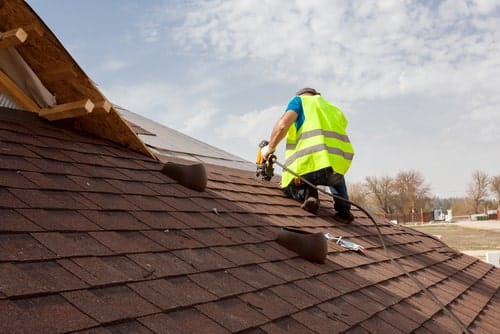
Making roof damage insurance claims can be complex. Insurers sometimes reject these claims. Let’s explore the process of claiming roof damage on your insurance.
Assess the Damage
The insurance company may request photos of all affected areas to determine whether insurance will cover storm damage. Do not take unnecessary risks to get the pictures. If conditions are dangerous, allow the insurance adjuster to take care of the job.
Examine Your Policy in Full
Before making a roof damage insurance claim, it is wise to read your policy and determine what is covered. To save money, you may have excluded wind and hail damage roof insurance claims. Hail damage claims do not apply to many metal roofing policies.
Call Your Insurance Company and Work With an Adjuster
The next step in making a roof damage insurance claim is calling your insurer. The sooner the company sees your damage, the earlier you receive the payout. Insurance covers storm damage in many cases.
Sent by the insurer, the adjuster should take their time and thoroughly inspect your home before filing a roof damage insurance claim.
Ask the insurance company to send another adjuster if you disagree. If you dispute with both adjusters, your insurance company will send an engineer to look at your property.
Get a Contractor’s Estimate
Don’t count on the insurance adjuster to tell you how much the repairs will cost. Their job is to “low-ball” the repair bill and save as much money as possible. Instead, work with a qualified contractor with experience in handling insurance companies.
Having A to Z Construction on your side means that our roofing experts will resolve your problem quickly. We will handle your hail damage roof insurance claim or any other issues with care.
Your insurance company will need a written estimate on company letterhead to process the claim. Do not get a verbal estimate, as the insurance company will not accept it.
Keep Complete Written Logs
Roof damage insurance claims need a solid paper trail. Insurance companies are notorious for claiming they did not receive your paperwork.
File Promptly
Roof damage can worsen over time if you do not repair it right away. It may also be harder for adjusters and contractors to see the problem if time has passed.
Frequently Asked Questions About Storm Damage Insurance
Here are some frequently asked questions about storm damage and roofs.
What should I do if a neighbor’s tree damages my roof?
Ask your neighbor to file a claim with their insurance company as soon as possible, as their insurance may be liable.
Does Homeowners insurance cover an unmaintained roof?
No. Companies only cover roof damage insurance claims after regular maintenance. Insurance does not cover wear and tear.
How much does a roof replacement typically cost?
Roof replacements cost $8,600 on average, however, this will depend on the size of your roof as well as the roofing material you choose. You may recoup the cost when you file a roof damage insurance claim.
Claiming Roof Damage on Insurance
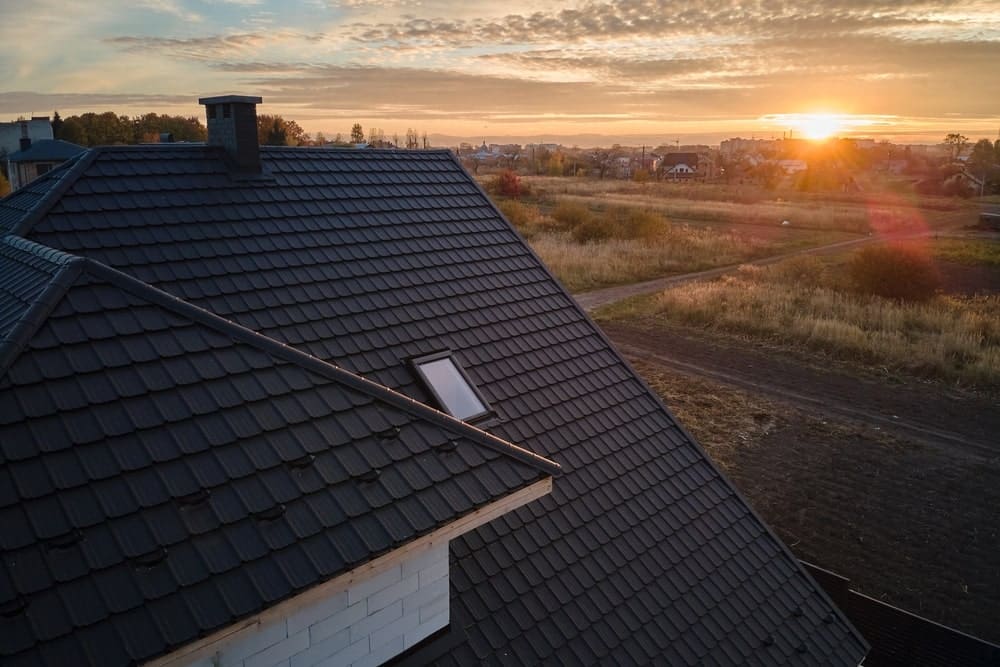
Everyone who has experienced severe weather wants to know whether insurance will cover storm damage. Following these tips can speed up your roofing insurance claim for storm damage. When faced with dangerous weather, Minnesota homeowners should contact A to Z Construction today for expert assistance.



